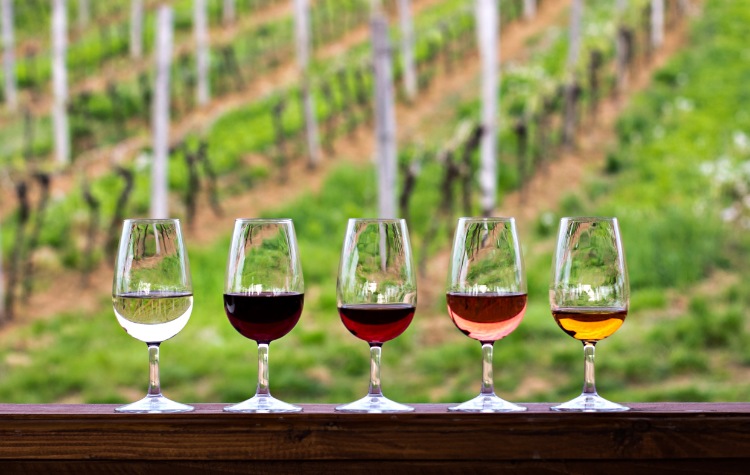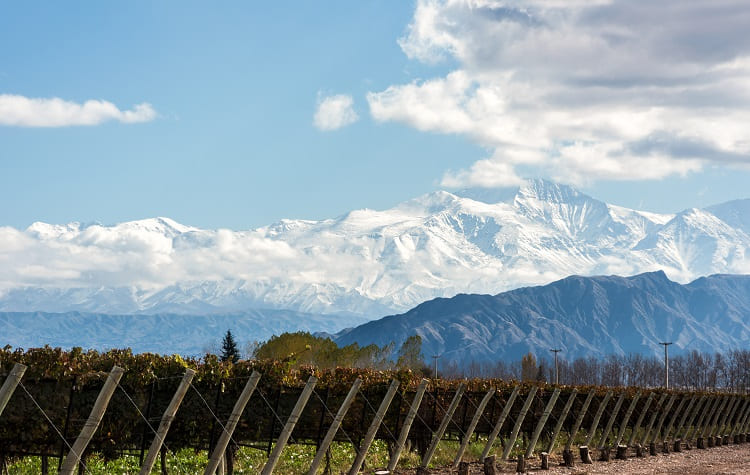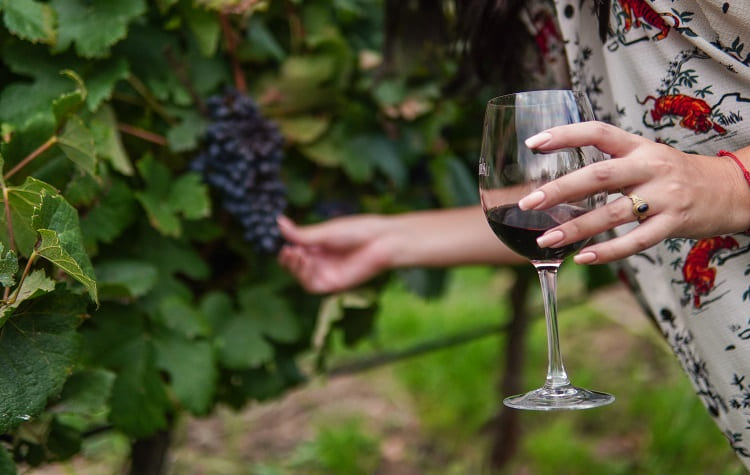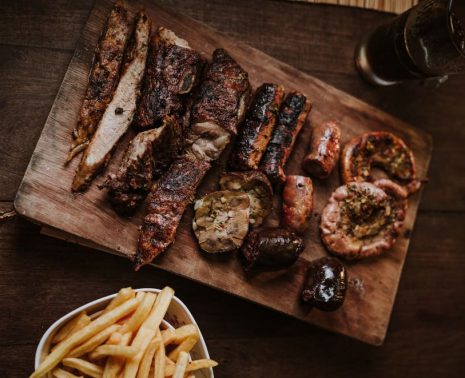
In 2010, wine was declared Argentina’s national liquor. Though that distinction is just over a decade old, wine has been a staple in Argentinian culture for more than 450 years.
Indeed, Argentine wine is as famous as Argentine beef, and it’s one of the best parts of visiting this South American destination. All over the country, travelers have an opportunity to sample a variety of world-class wines in some of the most picturesque settings they’ve ever seen.
In particular, you’ll want to try the Malbec, Bonarda, and Torrontes that are unique to Argentina. But there are also a number of international varieties that grow here.
In this quick guide to Argentine wine, we’re going to tell you what you can expect from the grape varietals here and where you can find them while you’re travelling this expansive and beautiful country.
Wine in Argentine Culture

Wine was brought to Argentina during the Spanish colonization of the Americas. Specifically, in 1556, cuttings from the Central Valley in Chile were brought to Argentina. By 1557, the first commercial vineyard was established at Santiago del Estero by a group of Jesuit missionaries.
Between then and 1589, vineyards expanded into Mendoza and San Juan. In 1868, the French brought Malbec to Argentina. That same century, Italians brought Bonarda varieties to the country. And throughout the 20th century, more and more varietals came to be planted here.
Today, wine is central to Argentinian culture. Although it is world-class, wine isn’t pretentious here. You tend to see it beside a parilla more often then a white table cloth. In Argentina, wine is the glue that brings friends, family, and fabulous food together.
Argentine Wine Varieties
The 5th largest wine producer in the world, Argentina offers up reds, whites, and even sparkling varieties. Malbec, Bonarda, and Torrontes are among the most unique varieties you’ll find here, though there are plenty of international types that any connoisseur will recognize.
Malbec
Malbec was imported to Argentina from France in the mid-19th century. A Bordeaux variety, it thrived in the dry and humid climate and it’s now the most famous variety to come out of this country.
The best Argentinian Malbec’s are a rich violet color. They carry full and fruity notes that pair perfectly with Argentinian steak, for which the country is also famous.
Wine connoisseurs with a more evolved palette may notice the subtle difference between Malbec’s coming from the north of the country and those coming from the south. Thanks to the warmth in the north, these Malbec’s are usually darker and higher in alcohol content. In the south, cooler climates give these Malbec’s a natural acidity that’s palpable.
Bonarda/Douce Noir
The Argentine red wine called Bonarda is not the same as the Bonarda produced in Italy. Argentine Bonarda comes from an entirely different grape: the Douce Noir. This is the second most widely planted red grape variety in Argentina, after Malbec, of course.
Bonarda, like Malbec, can be very fruity and acidic. Aromatically, you might notice hints of black cherry, blueberry, and plum. But Bonarda tends to be more aromatically complex, with hints of 5-spice, allspice, violet, and peony following those first notes.
Bonarda is medium-bodied and smooth. They’re easy to drink and even easier to pair, matching with everything from chicken, beef, and pork to even steak-like fish.
Torrontes
As champagne is to France, Torrontes is to Argentina. That is, it’s only produced here. And that makes it exclusive.
The majority of the Torrontes grape variety is grown in Salta, at nearly 5,000 feet altitude. The cool winds those grapes receive, along with an abundance of sunlight, gives the wines produced with them a serious flavor profile and crystalline color.
Torrontes tend to be sweet and dry. They carry floral flavor with notes of orange and other citrus fruits. Pair these very unique Argentine wines with spicy empanadas, tamales, humitas, and locros.
International Varieties
The previous three varieties are what we may think of as Argentine wine specialties. But with the growth of the industry, many international varieties have also been planted here.
Argentina does Cabernet Sauvignon incredibly well. Argentine varieties of Cab Sav have flavors of tobacco and black currant. However, you’ll usually find these in blended wines, such Cabernet Franc and Merlot.
Pinot Noir grows well in northern Patagonia. These Pinot Noirs have light color, body, and tannins, but with red fruit and mineral undertones, they’re still complex and deep.
Merlot is known as the world’s most versatile grape, so of course it’s grown here. Argentine red wine Merlot varieties have low tannin levels, which make them smooth and mellow.
The Argentine Wine Regions

Argentina is more than 1,000,000 square miles large. Which means you need to know where to look for an incredible wine experience, or if you have your heart set on a specific variety. Here are the 4 most important wine regions in the country and a little bit about what you can find there.
Mendoza
If you know only one place associated with Argentine wine, it’s probably Mendoza. This is the most important wine region in the country. Located in western Argentina at the foothills of the Andes mountains, Mendoza produces more than 60% of Argentinian wine.
Pink-skinned varieties such as Cereza and Criolla Grande used to reign supreme in Mendoza. Today it’s the home of the best Argentinian Malbec. The highest rated of these wines come from Lujan de Cuyo and the Uco Valley, located between 2,800 and 5,000 feet above sea level.
San Juan & La Rioja
After Mendoza, San Juan is the second largest wine-producing region in Argentina. Argentine red wines made from Syrah and Douce Noir are some of the best you’ll find, but you may also be interested in taste-testing some of the sherry-style wines, brandies, and vermouth that have been produced here for many, many years.
La Rioja is one of the oldest wine regions in Argentina. In fact, it has the longest continuous history of wine production in the entire country. If you’re keen to try Torrontes, this is the place to do it. Look for the local sub-variety called Torrontes Riojano.
Northwest Argentina
In the Northwest of Argentina, you’ll find three wine-producing provinces: Catamarca, Jujuy, and Salta. What makes the varietals of these provinces special is that they’re grown more than 4,900 feet above sea level. That makes them some of the world’s highest vineyards.
That elevation lends itself to acidic wines that are both balanced and deep. When in Salta, be sure to try a fruity Cab Sav or a Tannat. You can also find full bodied Torrontes whites here.
South Argentina
Patagonia, and specifically Rio Negro and Neuquen, were always the fruit producing regions of Argentina. That is, until someone realized that these places would be fantastic for growing cool climate varietals.
Here, you must try the Pinot Noir, Semillion, and Torrontes. And if you’re a fan of sparkling wine, this is where many of the grapes for that industry are sourced.
Argentine Wine Experiences with Kuoda
Argentina is one of the most infamous wine-producing countries in the world. There’s a long history of wine production here and while the Malbec is the most famous of all, the Argentine wine industry is robust. You’ll find unique specialties like Torrontes along with classics like Cab Sav and Pinot Noir.
If you’re looking to experience Argentine wine in the most immersive way possible, take a look at our Waters and Wines tour.
A Foodie’s Guide To Peruvian Fusion Cuisine in Lima
It’s no surprise that Peru is famous for its cuisine, recognized all over the world - delicious dishes like ...
Read PostEat and Drink Your Way Through 10 Days in Argentina’s Wine Country
From the sizzling parilla grills to the sun-kissed vineyards of Mendoza, travel to Argentina’s wine country ...
Read PostThe Best Places To Try Asado In Argentina on Your Foodie Trip To South America
When you travel to Argentina, remember that dining is not just a meal; it's a celebration of life, culture, an...
Read Post

 Call
Call 
























